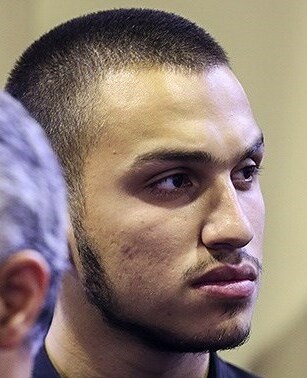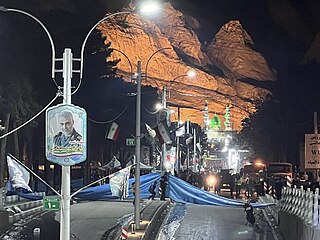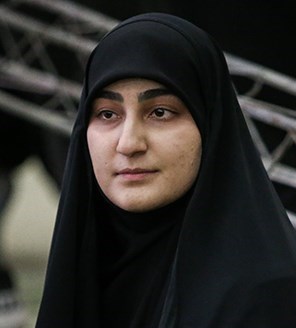
The Quds Force is one of five branches of Iran's Islamic Revolutionary Guard Corps (IRGC) specializing in unconventional warfare and military intelligence operations. U.S. Army's Iraq War General Stanley McChrystal describes the Quds Force as an organization analogous to a combination of the CIA and the Joint Special Operations Command (JSOC) in the United States. Responsible for extraterritorial operations, the Quds Force supports non-state actors in many countries, including Hezbollah, Hamas, Palestinian Islamic Jihad, the Houthi movement, and Shia militias in Iraq, Syria, and Afghanistan. According to Michael Wigginton et al., the Al-Quds Force is "a classic example of state-sponsored terrorism."
Numerous civilians, including men, women, children, government officials, activists, secular intellectuals and clerics have been victims of assassination, terrorism, or violence against non-combatants, over the course of modern Iranian history. Among the most notable acts of terrorism in Iran in the 20th century have been the 1978 Cinema Rex fire and the 1990s chain murders of Iran.

Qasem Soleimani was an Iranian military officer who served in the Islamic Revolutionary Guard Corps (IRGC). From 1998 until his assassination by the United States in 2020, he was the commander of the Quds Force, an IRGC division primarily responsible for extraterritorial and clandestine military operations, and played a key role in the Syrian Civil War through securing Russian intervention. He was described as "the single most powerful operative in the Middle East" and a "genius of asymmetric warfare." Former Mossad director Yossi Cohen said Soleimani's strategies had "personally tightened a noose around Israel's neck."
The 2012 attacks on Israeli diplomats occurred on 13 February 2012 after a bomb explosion on an Israeli diplomatic car in New Delhi, India, wounding one embassy staff member, a local employee and two passers-by. Another bomb planted in a car in Tbilisi, Georgia failed to explode and was defused by Georgian police.

Since the 1980s there has been an ongoing proxy conflict between Iran and Israel. Motivated by the periphery doctrine, Imperial Iran and Israel had close relations, seeing Arab powers as a common threat. After the 1979 Islamic revolution, Iran cut off relations, but covert ties continued during the subsequent Iran–Iraq War. Iran trained and armed Hezbollah during Israel's 1982 invasion of Lebanon, and continued to back Shia militias throughout the Israeli occupation of Southern Lebanon. Even before 1979, Iranian Islamists had materially supported the Palestinians; after 1979 Iran attempted relations with the Palestine Liberation Organization, and later with Palestinian Islamic Jihad and Hamas. Israel fought a war with Hezbollah in 2006.

Mohammad-Ali Allahdadi was an Iranian brigadier general in the Islamic Revolutionary Guard Corps and a military officer in the Quds Force.

Jamal Ja'far Muhammad Ali Al Ibrahim, better known by his kunyaAbu Mahdi al-Muhandis, was an Iraqi paramilitary leader and former chief of staff of the Popular Mobilization Forces (PMF). At the time of his death, he was deputy chief of the PMC.
Iran is an opponent of Islamic State of Iraq and the Levant (ISIL), fighting the group in Syria and Iraq.

On 19 March 2016, a suicide bombing took place in Istanbul's Beyoğlu district in front of the district governor's office. The attack occurred at 10:55 (EET) at the intersection of Balo Street with İstiklal Avenue, a central shopping street. The attack caused at least five deaths, including that of the perpetrator. Thirty-six people were injured, including seven whose injuries were severe. Among those injured were twelve foreign tourists. Among those killed, three were of Israeli nationality. On 22 March, the Turkish interior minister said that the bomber had links with ISIL.

Jihad Mughniyah was a Lebanese politician and prominent member of the Lebanese Shia militant group Hezbollah, and the son of Imad Mughniyeh. He was killed in 2015 in the Mazraat Amal incident, an airstrike attributed to Israel.

The funeral of Qasem Soleimani, an Iranian major general in the Islamic Revolutionary Guard Corps (IRGC), was held from 4 to 7 January 2020 in some cities in Iraq and Iran – including Baghdad, Karbala, Najaf, Ahvaz, Mashhad, Tehran, Qom, and his hometown Kerman.

On 3 January 2020, Qasem Soleimani, an Iranian major general, was killed by an American drone strike ordered by U.S. President Donald Trump near the Baghdad International Airport in Iraq, while travelling to meet Iraqi prime minister Adil Abdul-Mahdi.

Esmail Qaani is an Iranian brigadier general in the Islamic Revolutionary Guard Corps (IRGC) and commander of its Quds Force, a division primarily responsible for extraterritorial operations. The Supreme Leader of Iran, Ali Khamenei, appointed Qaani to succeed Qasem Soleimani as Commander of the Quds Force.
Events in the year 2020 in Iran.
The killing of Iranian Major General and Quds Force commander Qasem Soleimani in Iraq by the United States brought strong reactions from around the world.
Abdolreza Shahlaei is an Iranian military officer who serves as the commander of the Yemen division of the Quds Force of the Islamic Revolutionary Guard Corps.

Since the early 1990s, the Islamic Republic of Iran has been sponsoring Hamas with military aid and training and financial aid. Iran has remained a key patron of Hamas, providing them with funds, weapons, and training.

On 3 January 2024, a commemorative ceremony marking the assassination of Qasem Soleimani at his grave in eastern Kerman, Iran, was attacked by two bomb explosions. The attacks killed at least 95 people, and injured 284 others. The Iranian government declared the bombings a terrorist attack, making it the deadliest such incident in the country since the Cinema Rex attack of 1978. On the following day, Islamic State, a Sunni extremist group, claimed responsibility for the attack in the Shia dominated country. According to Reuters, the United States Intelligence Community concluded that the attack was perpetrated by the Afghanistan branch of the Islamic State, Islamic State – Khorasan Province.
On 15 January 2024, Iran carried out a series of aerial and drone strikes within Iraq and Syria, claiming that it had targeted the regional headquarters of the Israeli intelligence agency Mossad and several strongholds of terrorist groups in response to the Kerman bombings on 3 January, for which the Islamic State took responsibility. The city of Erbil, which is the capital of Iraq's autonomous Kurdistan Region, was the target of 11 of the 15 total missiles that were fired. The remaining four missiles were directed at Syria's Idlib Governorate, targeting areas held by the Syrian opposition. In Erbil itself, the Iranian attack killed four civilians and injured 17 others. Iran's claims of having targeted the Israeli presence in Kurdistan and terrorist groups in Syria were rejected by the Iraqi government and the autonomous Kurdish government, both of which condemned the attack.

Zeinab Soleimani is the youngest daughter of Qasem Soleimani, the former commander of the Quds Force of the Iranian Islamic Revolutionary Guard Corps. She manages the Qasem Soleimani Foundation International. She studied political science at and graduated from Shahid Beheshti University in Tehran, Iran. Zeinab was the liaison between Soleimani and the families of Iranian military forces who were killed in the Iran-Iraq War and in wars in Iraq, Syria, and other countries in the region. She also traveled with her father to Syria, Iraq, and Lebanon on several occasions.












